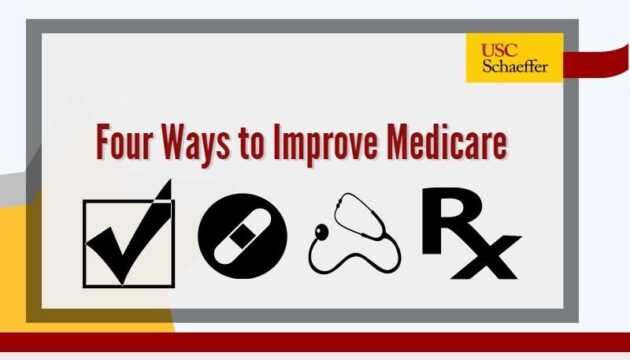Medicare and Medicaid
Our work in Medicare and Medicaid
-
For Vulnerable Populations, the Medicare Part D Doughnut Hole Disrupts Medication Adherence
Schaeffer Center researchers examined the impact of the Part D coverage gap on low-income and minority populations to determine if it changes individuals’ use of medications. Their findings show that the gap is particularly disruptive to minorities and low-income households.
Categorized in -
Early Failure of Dialysis Access among the Elderly in the Era of Fistula First
In this study of the short-term outcomes of arteriovenous fistulas and arteriovenous grafts for hemodialysis access in the Medicare population, the researchers found that fistulas were associated with a somewhat lower mortality than grafts in the first 12 months after creation but the incidence of repeat fistula/graft creation and tunneled catheter placement is substantially higher in the first 12 months after fistula creation compared with grafts.
Categorized in -
Four Evidence-Based Strategies to Improve Medicare
With the increase in beneficiaries from the aging baby boomer generation inevitably will come a larger price tag. This is leading many policy and industry experts to speculate and worry about the program’s long term ability to provide quality and affordable coverage.
Categorized in -
Schaeffer Faculty Offer Expertise on Medicare’s Future at DC Forum
When the last baby boomers sign up for Medicare in 2030, they’ll have long lives ahead. A man 65 likely will live 18.3 more years and a woman 65 another 21.7 years. Unfortunately, there’s a downside.
Categorized in -
Medicare’s Big Fat Problem, Fiscal and Otherwise
You can’t draw a straight line between growing Medicare spending and expanding American waistlines. But policymakers would be wise to keep both in mind as they ponder how to pay for the health care of 75-million-plus baby boomers who likely will live longer in worse health.
Categorized in -
Clozapine Revisited: Impact of Clozapine vs Olanzapine on Health Care Use by Schizophrenia Patients on Medicaid
In this evaluation of health care use and cost patterns for clozapine compared with olanzapine in the treatment of schizophrenia, the researchers found that clozapine increased duration of therapy and decreased risk of psychiatric hospitalization or suicide attempts compared to olanzapine, though increased drug costs and use of community mental health centers for complete blood count monitoring overwhelmed any offsetting savings.
Categorized in -
Insurers’ Negotiating Leverage and the External Effects of Medicare Part D
The researchers analyzed how increases in insurer size resulting from the implementation of Medicare Part D affected drug prices negotiated in the non-Medicare commercial market.
Categorized in -
Economic Burden of Undiagnosed Nonvalvular Atrial Fibrillation in the United States
This study estimated the US incremental cost burden of undiagnosed nonvalvular atrial fibrillation (AF) using administrative claims for working age and Medicare patients, and found that the direct medical costs for patients with undiagnosed AF are significantly higher than patients with similar observable characteristics without AF.
Categorized in -
Undertreatment of Osteoporosis and the Role of Gastrointestinal Events among Elderly Osteoporotic Women with Medicare Part D Drug Coverage
This study examined the rate of osteoporosis (OP) undertreatment and the association between gastrointestinal (GI) events and OP treatment initiation among elderly osteoporotic women with Medicare Part D drug coverage, and found that, among elderly women newly diagnosed with OP, only 28% initiated OP treatment, and GI events were associated with a higher likelihood of not being treated and a lower likelihood of being treated with bisphosphonates versus non-bisphosphonates.
Categorized in



